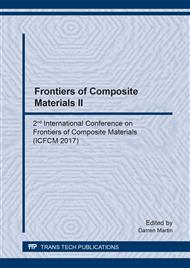p.72
p.79
p.84
p.89
p.93
p.98
p.105
p.110
p.115
Electrohydrodynamic (EHD) Bioprinting of Polycaprolactone Scaffolds
Abstract:
This study is combined a 3D printing and Electrohydrodynamic (EHD) methods to fabricate a 3D PCL scaffolds for tissue engineering. Various kV values were applied to the different PCL solutions to investigate the effect of the voltage on scaffolds. The morphology of 3D-EHD printed PCL scaffolds were characterized by an Optical Microscope. 10 wt.% PCL up to 3 kV was obtained best sample to use for tissue engineering scaffolds.
Info:
Periodical:
Pages:
93-97
Citation:
Online since:
May 2018
Authors:
Keywords:
Price:
Сopyright:
© 2018 Trans Tech Publications Ltd. All Rights Reserved
Share:
Citation:



